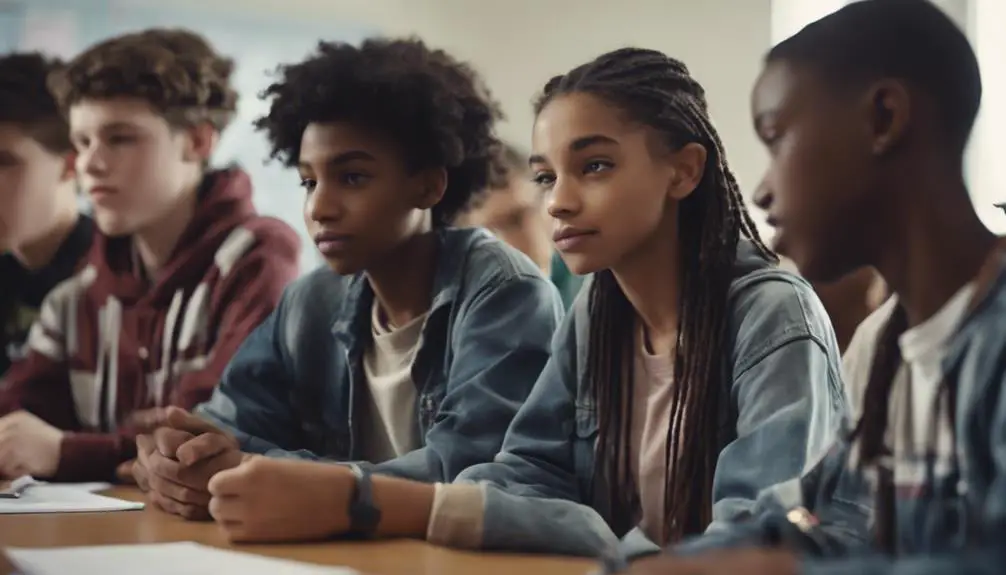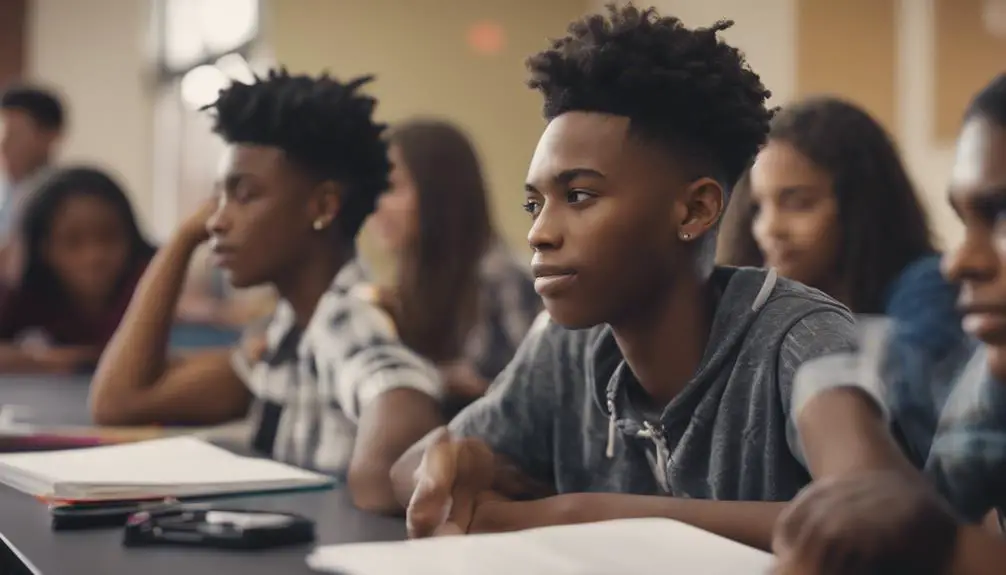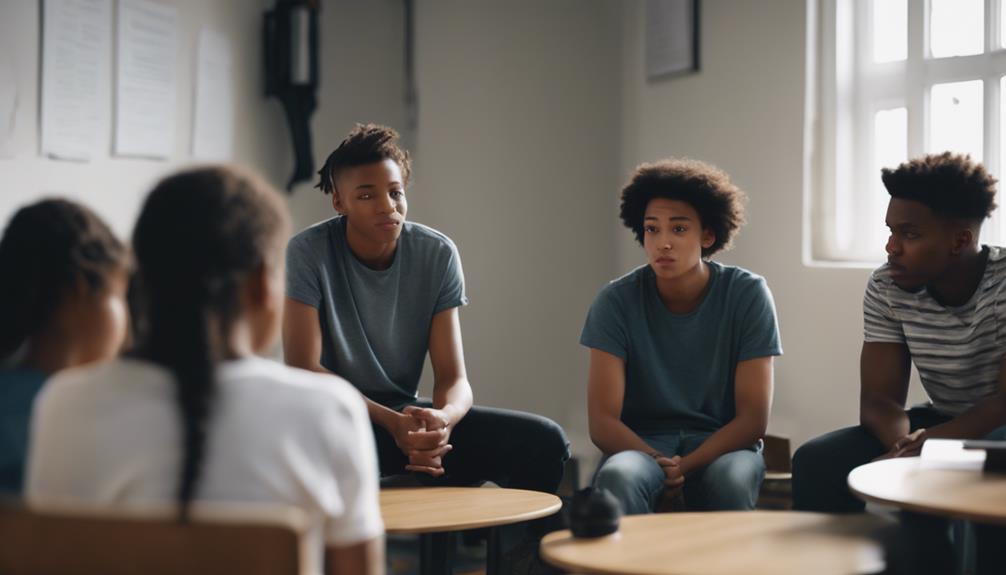It’s hard to have a classroom that is conflict-free, but there are ways of dealing with students who fight. In some cases, you may need to remove the student from the classroom and let them cool off for a bit. In other instances, you can try talking it out with both parties involved in the dispute. There are many techniques teachers use when they have an issue arise in their classroom. Whatever technique you choose, make sure it works well for your teaching style and environment!
What are the causes of fights in the classroom?
The causes of fights in the classroom are as numerous as problems between students. In order to better understand what can cause fights, one must first comprehend how students learn and react to their surroundings.
In an effort to have a well-behaved class, teachers should consider 15 reasons that can cause fights within a group of children:
1) Age: When students get older and reach puberty, they become more physically active and socially aware; these two factors can cause an increase in fighting because teenagers are trying to figure out who they are, while also taking charge of their own bodies.
2) Peer pressure: Fights can be caused by people wanting to belong and being looked up to by their peers. A student might follow along with their peers to cause a scene or a fight just because they are afraid of looking like a snitch.
3) Prejudice: Children throughout the world have been raised with different views on various aspects of life, which can lead to fights at school or in a classroom setting. A student who may not be the most open-minded may hold strong opinions about what others are doing, which can lead to conflict if students do not agree.
4) Different learning styles: Some students are more outgoing, while some are quieter; this affects how they learn and interact with their surroundings. There may be a student who learns by watching instead of actively participating, which can create tension in the classroom when students who are more active do not understand why someone is not participating.
5) Bullying: If someone has been picked on repeatedly, this can cause them to lose their temper and lash out at others; this cycle often continues because they begin to bully other students as well.
6) Drugs or alcohol: Teenagers often experiment with drugs and alcohol which can cause them to act out more than usual or create tension between other students who disapprove of what they are doing.
7) Lack of supervision: Children, especially older ones, love spending time outdoors; if they know that the teacher is not paying attention to what is happening around them, they may be more likely to cause problems.
8) Stress: When students are under stress, they are more likely to behave poorly; if something is stressing them out at home or in their personal lives, fighting may be the way that they deal with it.
9) Lack of respect for teachers: If a student does not show any reverence towards the teacher, it is likely that the student will cause a fight because they do not care about what could happen.
10) Bad behavior from other students: If there are students in the classroom who have been causing problems for years, new students may be discouraged from participating because they think that no one likes doing anything. This can create a negative environment that will eventually lead to fighting.
11) Age difference: If there is a large age gap between pupils in the same class, the older ones may feel superior to the younger ones. This can lead to fights because the elder pupils try and show that they are in charge or don’t want to be told what to do by someone younger than them.
12) Home life: If a child’s home life is very unhappy, it can cause fights at school where they can easily be influenced by others and take their anger out on them. Also, a child whose home environment is characterized by violence is most likely to always be engaged in fighting in the classroom.
13) Physical disability: A child may feel insecure about their physical appearance and be teased for this, leading to a fight where the bully tries to make them feel even worse about themselves or seeks to show off in front of others.
14) Bad past experience: A child may have had a bad experience in the classroom with another pupil and is not willing to let it go. For example, they may have made up after an argument previously but after this, the same situation arises again, and the child seeks revenge.
15) Competition: Some children may become more competitive than they need to be in order to overachieve. The child may behave in an aggressive way because they want others to know how good they are, leading to a fight.
These are just some of the many reasons that can cause or increase the chances of fights during class or in a classroom setting. If you understand what might cause problems, you will be able to handle them before they become too severe.
How do you prevent and manage fights in the classroom?
Well, clearly fights are an undesirable element in any classroom. You’d like to keep your students safe while they’re learning. And if you’ve got 20 minutes to kill before the next bell rings, who wants to spend that time refereeing a fight?
Take control of the situation as soon as possible. If it’s happening in the hallway, get your students away from the hallway to somewhere they can be supervised. Tackle problems head-on rather than putting them off or pretending they don’t exist. If you have a student who is provoking others, talk with him about his behavior and ask him what he wants to do differently.
Don’t be too quick to blame. Sometimes fights are just a result of everyday tensions and disagreements and getting out of hand. Situations like these call for a calming influence rather than an angry one.
If you have students who are fighting often, try talking with them together about their disagreements before they get violent. Ask each of them what’s upsetting him or her and how he or she might best release that frustration. If bullying is part of the problem, you must do something to stop it right away. It can escalate quickly into physical violence without warning.
It’s also important to teach your students how to manage their anger. Help them learn to handle disagreements without resorting to violence or intimidation. This can be an ongoing lesson that spills into other areas of the curriculum.
See, fighting isn’t just dangerous…it’s disrespectful! It shows a lack of respect for yourself and others, and you’ll notice that students who fight often don’t learn very well. They miss important lessons because they’re in the principal’s office or suspended for fighting.
1) Keep your emotions in check.
2) Stay calm and rational as you address the problem.
3) Intervene quickly before things escalate.
4) If you have students who are fighting often, try talking with them together about their disagreements before they get violent. Ask each of them what’s upsetting him or her and how he or she might best release that frustration.
5) Teach your students how to manage their anger. Help them learn to handle disagreements without resorting to violence or intimidation. This can be an ongoing lesson that spills into other areas of the curriculum.
6) It’s also important to teach your students how to respect themselves and others, and you’ll notice that students who fight often don’t learn very well. They miss significant lessons because they’re in the principal’s office or suspended for fighting.
7) If bullying is part of the problem, you must do something to stop it right away.
8) You can help students calm themselves down when they get angry rather than lashing out at others by helping them with their breathing and relaxing their muscles.
9) Have at least two adults in the room during lessons or activities so they can help you manage any fights that break out. That way, students won’t be able to take advantage of you and your peers when you’re trying to deal with a fight.
10) If your school has a bully-free campaign, a good way to help kids learn how to stand up to bullies is by teaching them about The Bully Stomp. It’s a great set of empowering moves that have been shown to stop bullying in its tracks.
11) Make sure you’re accessible if children need your help or the company of an adult they trust. If students know that they can come to you in a crisis, they’re less likely to try to solve things on their own.
12) You can also help students learn how to communicate with each other in positive ways by encouraging them. This will help them feel more comfortable using the moves when they need them most.
13) If you have an argumentative or hot-tempered student, talk with him about how he can approach his peers in a manner that is more understanding.
14) It’s also important to help students learn to apologize when they’ve hurt someone else’s feelings. Show them ways they can correct their mistakes if they need some guidance.
15) Remember, violence is a last resort. If you’ve already given him several chances to ask for help or apologize, and the student keeps hurting others, it’s time to consider removing him from the classroom.
16) Remind students that you’ll be glad to speak with them about anything they’re worried about or upset about if they need someone to talk with.
17) Give your students ways not just to manage their anger, but also to express it in non-violent ways. Some examples are writing or drawing about their feelings or engaging in physical activity like yoga or tai chi.
18) If you have a student who shows signs of being violent — for example, he often loses his temper or hits other students — get to know him very well. This way, you’ll be able to tell when he’s getting anxious so you can help him stay calm and lead him away from trouble before it starts.
19) You will need a clear set of classroom rules against fighting and a plan for enforcing them if students break the rules.
20) If you have a student who’s in danger of hurting himself or others, remove him from the situation immediately and get help. Keep an eye on him at all times, so he doesn’t do something harmful to either himself or someone else. For example, he can use The Bully Stomp moves on his stuffed animal.
Resolving Fights or Conflict After They Occur
Gordon recommended a no-lose or win-win conflict resolution strategy to deal with conflicts and fights in the classroom. This technique does not endorse compromise. He believes that, in compromise, both parties lose! That is, the parties made compromises, hoping that it will bring them what they needed at the beginning. With that, there is still a lack of trust between the two conflicting parties. Meanwhile, that should not be the case after a conflict or fight is resolved. Others, too, support a win-win resolution to problems (Kagan, Kyle, & Scott, 2004).
Find more about Gordon’s Model of Discipline here.
Gordon’s conflict resolution consists of six steps:
1. Define the problem:
Using active listening to help determine the other person’s needs and I-messages to convey your needs; define the problem in terms of those needs, not in terms of conflicting solutions.
2. Generate possible solutions:
This is also known as brainstorming. When quantity is sought, quality will emerge. Now that the problem has been defined in terms of needs, not conflicting solutions, both parties are free to be creative in generating solutions. Write down these solutions. No evaluation is done in this step.
3. Evaluate solutions:
Both parties evaluate the solutions with an eye to whether or not the solution(s) will meet their needs. Discard solutions that do not meet one’s needs. The odds are, if step two was done well, one or more solutions will survive that are deemed to meet both people’s needs. Hence, no compromise!
4. Choose a solution:
Examine surviving solutions for their workability. Choose one “best” solution. Avoid voting; seek consensus. Clarify for all concerned parties exactly what the agreed-upon solution is.
5. Implement the solution:
Agree upon who is to do what, when, and how well. Remember that both parties now are motivated to make this solution work because they see it as a means of getting their needs met. Approach parties not living up to their part of the bargain with an I-message, not punishment. No nagging is permitted.
6. Monitor the solution:
Build-in an agreed-upon “check-back” time to determine if the solution works. If it does, great. If the solution proves to be unsatisfactory, review previous steps to identify the breakdown. If all else fails, you still have other solutions that survived step three. Conflicts resolved using method 3 stay solved. Further, because the conflict is resolved in a manner that meets both person’s needs, the ongoing relationship is strengthened, setting the basis for resolving future conflicts of needs more easily. It worked once, and both came out winners. Who would not want to use this mutually acceptable conflict resolution process with future conflicts?
Check out more of our articles here.
Final Thoughts
Disagreements are inevitable, but they don’t have to be violent. With the right communication skills and approach, students can learn how to express their anger in a more positive way which will help them avoid using violence as a means of solving disputes with other people. The key is for you or another adult present to remain calm when talking about what happened during the fight so that you both understand each student’s perspective on the situation without creating an even bigger problem by escalating things further. Once you’ve gathered all information from your class members, it is important that any consequences given out are fair and proportional based on who started or escalated things first while also considering if either party needs some additional support after being involved in this type of conflict. Violence should never be the answer, so remind students to always communicate with you or another adult if they’re having issues with their peers to help solve problems together in a more nonviolent way. It’s never too late to teach students how to use their words instead of fists by walking them through your actions during the fight and explaining why it is important for them to resolve conflicts with other people in a more positive manner.




















